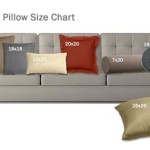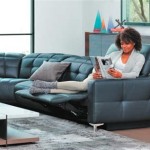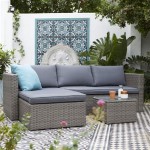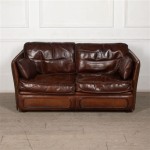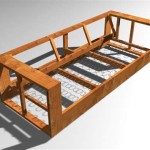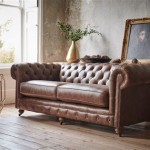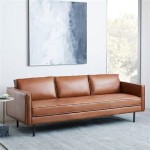Understanding Durable Sofa Fabrics for Long-Lasting Furniture
Selecting the right fabric for a sofa is a crucial decision, impacting both its aesthetic appeal and its longevity. Durability is a primary concern for many consumers, especially in households with children, pets, or frequent use. A durable sofa fabric can withstand daily wear and tear, resisting stains, fading, and abrasion, ultimately extending the lifespan of the furniture and minimizing the need for frequent replacements or reupholstering.
The choice of fabric involves considering a variety of factors, including fiber type, weave, construction, and any applied finishes. Some fabrics are inherently more durable than others due to their inherent properties. Understanding the characteristics of different materials can empower consumers to make informed choices that align with their lifestyle and aesthetic preferences.
Understanding Fabric Fiber Types and Their Durability
The fiber composition of a sofa fabric is a key determinant of its durability. Different fibers possess varying degrees of strength, resistance to abrasion, and susceptibility to stains.
Natural Fibers: Natural fibers, derived from plants or animals, offer a range of aesthetic qualities and performance characteristics. Cotton, linen, wool, and silk are common choices for upholstery, each with distinct advantages and disadvantages in terms of durability.
Cotton is a widely used natural fiber known for its softness, breathability, and affordability. However, untreated cotton is susceptible to staining and wrinkling and lacks inherent resistance to abrasion. Often, cotton is blended with other fibers, such as polyester, to improve its durability and stain resistance. Blends enhance cotton's performance, making it suitable for everyday use. Higher percentages of synthetic fibers within the blend contribute to greater durability.
Linen is a strong and absorbent natural fiber derived from the flax plant. It is known for its elegant appearance and resistance to pilling. However, linen wrinkles easily and is not as resistant to abrasion as some other fibers. Similar to cotton, linen is often blended with other fibers to enhance its durability and reduce wrinkling. Its natural texture and sophisticated look make it a popular choice for more formal living spaces.
Wool is a natural fiber prized for its durability, resilience, and resistance to stains and fire. It is naturally crimped, providing inherent elasticity that helps it resist wrinkles and maintain its shape. Wool is also relatively easy to clean, as its natural lanolin content repels dirt and liquids. While wool is more expensive than cotton or linen, its superior durability and performance make it a worthwhile investment for high-traffic areas.
Silk is a luxurious natural fiber known for its smooth texture and lustrous sheen. However, silk is delicate and susceptible to staining, fading, and abrasion. While silk is suitable for decorative pillows and low-use furniture in formal settings, it is not recommended for sofas that will be subjected to daily wear and tear. Its high cost and delicate nature make it a less practical choice for everyday use.
Synthetic Fibers: Synthetic fibers, manufactured from chemical compounds, are often engineered for enhanced durability, stain resistance, and ease of care. Polyester, nylon, acrylic, and olefin are common synthetic fibers used in upholstery fabrics.
Polyester is a widely used synthetic fiber known for its durability, stain resistance, and affordability. It is resistant to fading, wrinkling, and stretching, making it a practical choice for high-traffic areas. Polyester is often blended with other fibers, such as cotton or wool, to combine the benefits of both natural and synthetic materials. Microfiber, a type of polyester with very fine fibers, offers exceptional softness and durability, making it a popular choice for sofas.
Nylon is a strong and durable synthetic fiber known for its excellent abrasion resistance and elasticity. It is often used in blends with other fibers to enhance their durability and resilience. Nylon is also relatively easy to clean and resistant to staining. Its strength and durability make it a good choice for furniture in active households.
Acrylic is a synthetic fiber that mimics the look and feel of wool. It is resistant to fading, sunlight, and mildew, making it a good choice for outdoor furniture or sunrooms. However, acrylic is not as durable as polyester or nylon and is more prone to pilling. Its wool-like appearance at a lower cost makes it a popular alternative.
Olefin (polypropylene) is a durable and stain-resistant synthetic fiber that is commonly used in outdoor furniture. It is resistant to fading, mildew, and moisture, making it suitable for environments exposed to the elements. Olefin is also relatively inexpensive, making it a cost-effective choice for durable upholstery. Its resistance to water and sun damage makes it ideal for patios and decks.
Understanding Fabric Weaves and Their Impact on Durability
The weave of a fabric refers to the way the yarns are interlaced, influencing its texture, appearance, and durability. Tightly woven fabrics are generally more durable than loosely woven fabrics because the yarns are packed more closely together, providing greater resistance to abrasion and tearing. Several common weave types are used in upholstery fabrics, each with its own characteristics.
Plain Weave: A plain weave is the simplest and most common type of weave, characterized by a basic over-under interlacing of the warp and weft yarns. Plain weave fabrics are generally durable and affordable, but they can be prone to wrinkling and stretching. Canvas and duck cloth are examples of plain weave fabrics commonly used for upholstery. Their simplicity makes them versatile for various styles.
Twill Weave: A twill weave is characterized by a diagonal rib pattern created by the interlacing of the warp and weft yarns. Twill fabrics are generally more durable and wrinkle-resistant than plain weave fabrics due to their tighter construction. Denim and herringbone are examples of twill weave fabrics. The diagonal pattern adds visual interest and contributes to the fabric's strength.
Jacquard Weave: A jacquard weave is a complex weave that allows for intricate patterns and designs to be woven directly into the fabric. Jacquard fabrics are generally more expensive than plain or twill weave fabrics, but they offer a unique aesthetic appeal. Brocade and damask are examples of jacquard weave fabrics. These fabrics often feature raised patterns and are commonly used for formal upholstery.
Pile Weave: A pile weave involves creating a raised surface, or pile, on the fabric. Velvet and corduroy are examples of pile weave fabrics. The density and height of the pile influence the fabric's durability and resistance to crushing. High-density, short-pile fabrics are generally more durable than low-density, long-pile fabrics. While luxurious, these fabrics may require more maintenance to preserve their appearance.
Fabric Finishes and Their Role in Enhancing Durability
Fabric finishes are treatments applied to fabrics to enhance their performance characteristics, such as stain resistance, water repellency, and flame retardancy. These finishes can significantly improve the durability and longevity of sofa fabrics, making them easier to clean and maintain. Several types of fabric finishes are commonly used in upholstery.
Stain-Resistant Finishes: Stain-resistant finishes are designed to repel liquids and prevent stains from penetrating the fabric fibers. These finishes make it easier to clean spills and prevent permanent staining. Teflon and Scotchgard are common brands of stain-resistant finishes. The effectiveness of these finishes can vary depending on the specific finish and the type of stain.
Water-Repellent Finishes: Water-repellent finishes prevent water from soaking into the fabric, making it suitable for outdoor furniture or areas prone to spills. These finishes can help protect the fabric from water damage and mildew growth. Similar to stain-resistant finishes, the level of water repellency can vary.
Flame-Retardant Finishes: Flame-retardant finishes are designed to slow down the spread of fire in the event of a fire hazard. These finishes are often required for upholstery fabrics used in commercial settings. While flame-retardant finishes can provide an added layer of safety, they may also contain chemicals that raise environmental concerns.
Anti-Microbial Finishes: Anti-microbial finishes inhibit the growth of bacteria, mold, and mildew on the fabric. These finishes are particularly useful for furniture in healthcare settings or homes with allergy sufferers. They can help prevent odors and stains caused by microbial growth.
When selecting a sofa fabric, it is essential to consider the type of finish applied and its potential impact on the fabric's durability, appearance, and environmental footprint. Some finishes may require special cleaning instructions or have limited longevity.
Ultimately, the most durable sofa fabric is the one that best suits the specific needs and lifestyle of the user. By understanding the properties of different fiber types, weaves, and finishes, consumers can make informed choices that ensure their sofa looks beautiful and withstands the test of time.

What S The Most Durable Furniture Fabric

Our Favorite Durable Fabrics For Upholstery Carmen S Custom Window Treatments

Best Fabrics For Sofas The Inside

What Is The Best Fabric For A Sofa Living Designs Furniture

Durable Sofa Materials Ahg Interiors

Stain Resistant Fabrics For Sofas Armchairs Swyft

Best Sofa Materials Leather Vs Fabric Sofas

Imitate Linen Most Durable Sofa Fabric Large Corner Polyester For Furniture And Home Textile China Popular Made In Com

Panama Basketweave Woollen Linen Look Durable Soft Furnishing

What Is The Most Durable Fabric For A Sofa Micadoni Home
Related Posts

